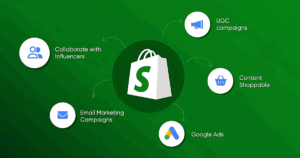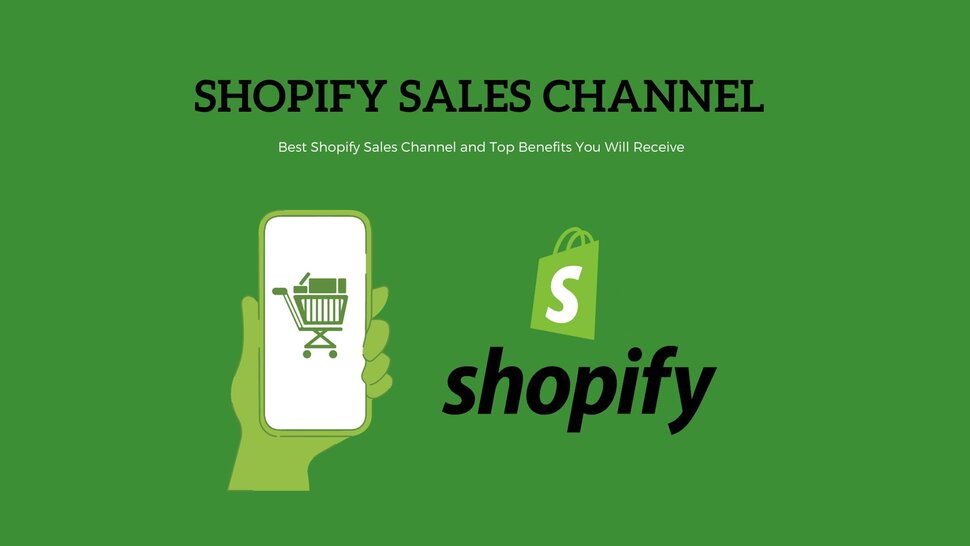Alright, let’s talk about something that’s on every Shopify store owner’s mind these days: scaling. It’s like, you’ve got your store up and running, customers are trickling in, but you want that flood, right? More sales, more visibility, more everything. And the secret weapon for 2025? Multi-channel selling. Yeah, it’s a buzzword, but there’s a good reason for it. The more places you sell, the more people you reach—and the more you sell.
Why Is Multi-Channel Selling a Big Deal in 2025?
Here’s the thing: people don’t hang out in just one place anymore. Some shop on Instagram, others browse Facebook Marketplace, some hit up Amazon, and then there are those who love Etsy or even TikTok Shopping (yes, it’s a real thing now). If you’re only on your Shopify store, you’re basically throwing a party in an empty room.
Multi-channel selling means your products show up wherever your customers are hanging out. And honestly? It’s kind of like fishing in different ponds instead of just one. The more ponds, the better your catch chances.
Start with the Obvious: Marketplaces
Amazon and eBay are giants for a reason. Their massive customer bases make it almost silly not to be there. You can integrate your Shopify store with these platforms so your inventory syncs automatically—less headache, fewer mistakes. Plus, they handle a lot of the heavy lifting when it comes to logistics and customer trust.
But watch out! Marketplaces have fees, and sometimes they can nibble away at your profits. So, don’t just dive in blindly. Do a bit of math first—figure out what makes sense for your margins and your brand.
Social Commerce is No Joke
If you haven’t dipped your toes in social commerce yet, 2025 is the year to jump in. Instagram Shops, Facebook Shops, Pinterest Shopping—they’re all making it easier than ever to buy stuff without leaving the app.
One thing I love about social commerce? It’s super visual and personal. You can show off your products in real life, through stories, reels, or posts. Plus, people can shop right there when they’re inspired, no extra clicks needed.
Just a heads-up: not all social platforms are created equal for every product. What works for a trendy clothing line might not fly for home goods. So, test and learn.

Don’t Sleep on Google Shopping
Google is where a lot of buying journeys start, even if people don’t realize it. Setting up Google Shopping ads linked to your Shopify store can boost your visibility big time. It’s like planting a signpost on the busiest street in town.
And bonus? Google Shopping ads tend to attract buyers who are already close to purchasing, so your ad dollars might stretch further here than on some other platforms.
Manage Your Inventory Like a Pro
Here’s a truth bomb: multi-channel selling can get messy fast. Imagine juggling a dozen plates in the air—that’s your inventory without the right system.
You want tools that sync everything in real-time. Shopify’s native apps or third-party solutions like Sellbrite or TradeGecko can help keep your stock accurate across all channels. Nothing kills a sale faster than selling something you don’t have.
Customer Experience Can’t Be an Afterthought
When you’re selling on multiple platforms, it’s tempting to think, “Okay, the more places, the better.” But here’s the catch: customer service and branding have to stay consistent.
People notice when your product description sounds different on Instagram than it does on Amazon. Or when the shipping times vary wildly depending on where they buy. Don’t let your brand look like a chameleon.
Also, set clear expectations on shipping, returns, and customer support for each channel. It’s not glamorous work, but it pays off.
Automate What You Can, But Keep the Human Touch
Automation is your friend here. It’ll save you hours every week. Order fulfillment, email responses, inventory updates—they don’t need to be done manually anymore. But don’t go full robot. People like feeling connected.
A quick personal note? I once bought from a small shop on Instagram and got a handwritten thank-you note with my order. That little touch made me a loyal customer for life. So, automate the boring stuff, but sprinkle in some personality wherever you can.
Keep an Eye on Data, But Don’t Obsess
Here’s something to chew on: data is great, but don’t let it paralyze you. Track your sales, channel performance, customer behavior—sure. But don’t get stuck staring at spreadsheets forever.
Look for patterns. If Instagram is killing it and Facebook is meh, double down on what works. If a new channel doesn’t show results after a solid try, it’s okay to pull back. Scaling is about smart moves, not just more moves.
Final Thoughts: Multi-Channel is a Marathon, Not a Sprint
Scaling through multi-channel selling isn’t some overnight magic trick. It’s more like training for a marathon—you build momentum, learn from missteps, and keep going.
Don’t be afraid to experiment. The platforms will change, customer habits will shift, but the core idea stays the same: meet your customers where they are.
So, ready to cast your net wider in 2025? It’s a wild ride, but with the right strategies, you can turn that Shopify store of yours into a multi-channel powerhouse. Just remember: keep it real, keep it simple, and keep hustling.

